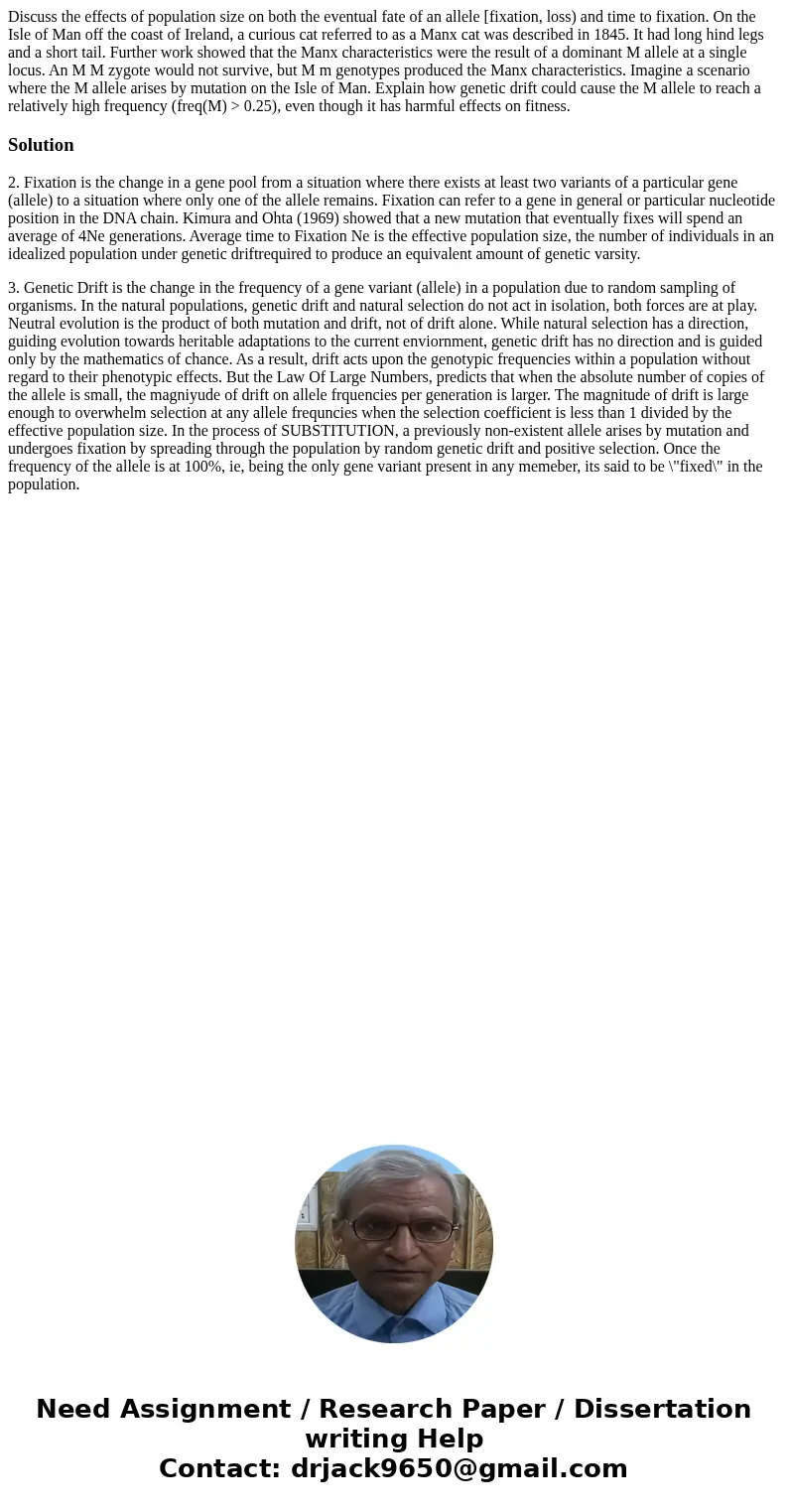Discuss the effects of population size on both the eventual
Solution
2. Fixation is the change in a gene pool from a situation where there exists at least two variants of a particular gene (allele) to a situation where only one of the allele remains. Fixation can refer to a gene in general or particular nucleotide position in the DNA chain. Kimura and Ohta (1969) showed that a new mutation that eventually fixes will spend an average of 4Ne generations. Average time to Fixation Ne is the effective population size, the number of individuals in an idealized population under genetic driftrequired to produce an equivalent amount of genetic varsity.
3. Genetic Drift is the change in the frequency of a gene variant (allele) in a population due to random sampling of organisms. In the natural populations, genetic drift and natural selection do not act in isolation, both forces are at play. Neutral evolution is the product of both mutation and drift, not of drift alone. While natural selection has a direction, guiding evolution towards heritable adaptations to the current enviornment, genetic drift has no direction and is guided only by the mathematics of chance. As a result, drift acts upon the genotypic frequencies within a population without regard to their phenotypic effects. But the Law Of Large Numbers, predicts that when the absolute number of copies of the allele is small, the magniyude of drift on allele frquencies per generation is larger. The magnitude of drift is large enough to overwhelm selection at any allele frequncies when the selection coefficient is less than 1 divided by the effective population size. In the process of SUBSTITUTION, a previously non-existent allele arises by mutation and undergoes fixation by spreading through the population by random genetic drift and positive selection. Once the frequency of the allele is at 100%, ie, being the only gene variant present in any memeber, its said to be \"fixed\" in the population.

 Homework Sourse
Homework Sourse